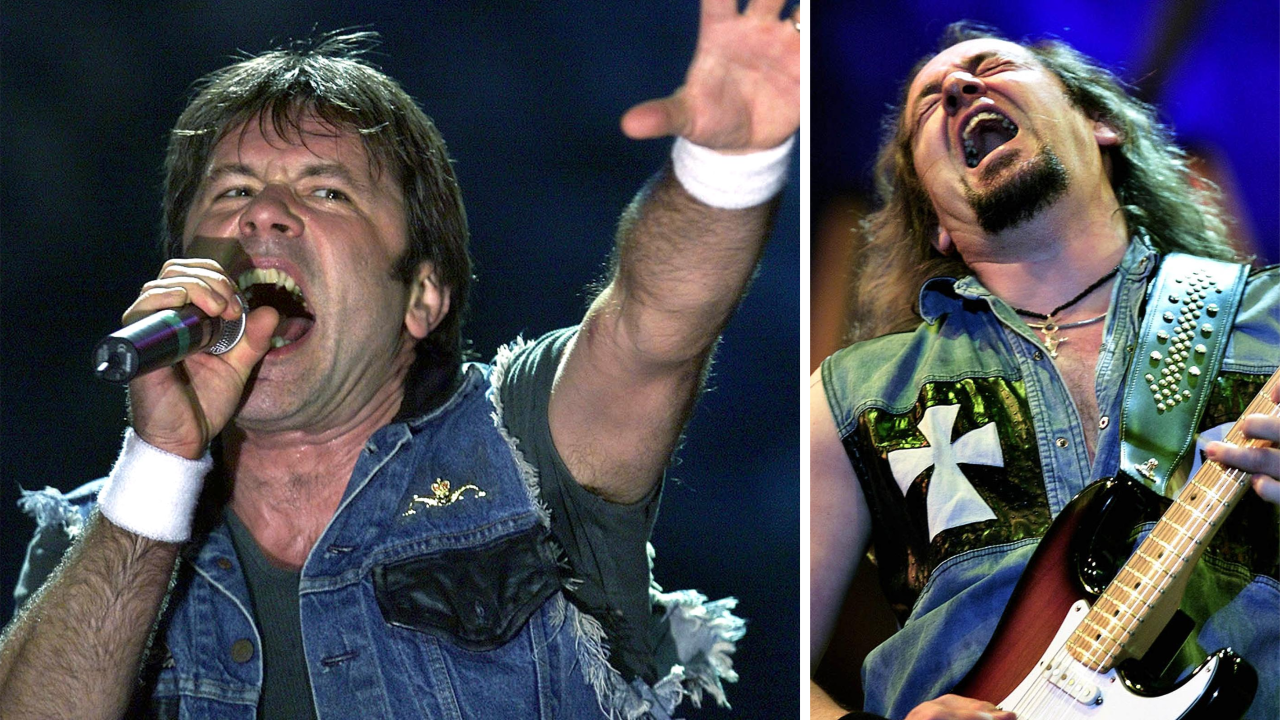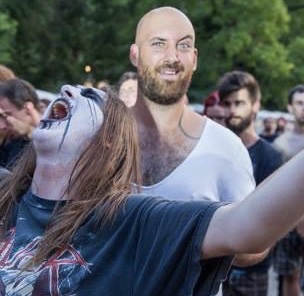In 2023, it’s easy to think of Iron Maiden as an unshakable monolith of heavy metal. But that’s not entirely true, mad as it might now seem. During the 1990s, The Beast’s career was threatened by the very real prospect of being completely derailed.
Iconic vocalist Bruce Dickinson departed Maiden back in 1993, the band’s momentum having vanished after the lukewarmly received No Prayer For The Dying and Fear Of The Dark albums. The next year, Maiden roped in former Wolfbane vocalist Blaze Bayley as a replacement: the Brummy fronted them for 1995’s The X Factor and 1998’s career-worst Virtual XI.
Releasing the most uninspiring material of their career and with nu metal starting to totally dominate the heavy music scene, Maiden felt like yesterday’s men. That fact was only hammered home when the band were unable to sell out London’s 5,000-capacity Brixton Academy on the Virtual XI tour: a venue that they could have filled multiple nights over a decade prior. It seems inevitable now, but the “classic” Iron Maiden needed to return.

At the very start of 1999, rumours began circling that Dickinson was going to reunite with the band for a 20th-anniversary tour, which would come in conjunction with the release of the Ed Hunter greatest-hits/video game package. So commonplace was this morsel of gossip that Cradle Of Filth frontman Dani Filth actually predicted the singer’s return in Kerrang! merely a week before the official announcement was made.
Dickinson had to go as far as outright denying the word-of-mouth in the press to try and maintain the surprise. He told Kerrang!, “People have asked me about these fucking rumours every five minutes since my solo album [1998’s Chemical Wedding] started getting cracking reviews!” However, he then softened his stance in the very same interview: “In the right circumstances, it would be a bit of a laugh.” Maiden manager Rod Smallwood addressed the story in his typically forthright way by calling it “bollocks”.

But the cat couldn’t stay in the bag for too long. On January 16, 1999, Bruce performed in Paris with Brazilian metal band Angra (nowadays best known for guitarist Kiko Loureiro joining Megadeth). He was quizzed by an online fan blog about a potential Maiden reunion before the gig. Although he stopped short of confirming a comeback, the frontman admitted that there had been conversations about “doing something special for the year 2000”, adding that they were “trying to keep things quiet for the moment”.
On February 10, 1999, that something special was confirmed on Maiden’s website. Dickinson was officially back, as was former guitarist Adrian Smith, who originally left in 1990. His replacement, Janick Gers, would be sticking around, expanding Maiden into a six-piece.
Smith’s return came as more of a surprise, but he was an essential element in the eyes of Dickinson and the rest of Maiden, as well as countless fans. After all, he had co-written such hits as Wasted Years and 2 Minutes To Midnight, and the dark No Prayer For The Dying days immediately followed his departure. Drummer Nicko McBrain compared Maiden getting both Dickinson and Smith back to the band “winning the lottery twice”.
Metalheads rejoiced at the reunion, which seemingly repaired the relationship between Dickinson and bassist/band leader Steve Harris. The duo’s camaraderie massively broke down in the early ’90s and a prickly war of words had been playing out during the intervening years. Harris revealed in Mick Wall’s 1998 Maiden biography Run To The Hills that he was fuming over what he perceived as Dickinson’s lack of effort during his final tour with Maiden. On the other side of the fence, Bruce had claimed he felt like “the bloke who stays on a bit too long at a party”.
The band tried to downplay that feud after the reunion. Dickinson said to Metal Hammer in June 2000, “I don’t think [things] got that bad at all.” He added: “The way I see it, the relationship between me and Steve hasn’t really changed at all in the last 20-odd years.” The singer and Harris apparently even exchanged a hug upon meeting again, which Dickinson said is one of only three times they’d ever done so.
Dickinson also declared that Maiden were not coming back just for nostalgic purposes. “I don’t want to equal people’s expectations,” he told Kerrang!, “I want to exceed them.” Harris had his eyes on far more than making Maiden another legacy act as well, saying to Kerrang!: “When Bruce came back, he was totally positive about making the best Maiden album possible, and that’s what I wanted to hear.”
We all know what happened next. A rejuvenated Maiden embarked on the Ed Hunter tour in 1999, before heading into the studio to record their modern classic, 2000’s Brave New World. Metal Hammer gave the album – the first new Maiden material to feature Dickinson and Smith since 1988 – a glowing 9/10 review: the late Malcolm Dome called it, “a clarion call to arms, a rousing resurrection […] once again we can proclaim Maiden’s supremacy – just like the old days.”
Just like that, Iron Maiden were unstoppable again – and have been ever since.

